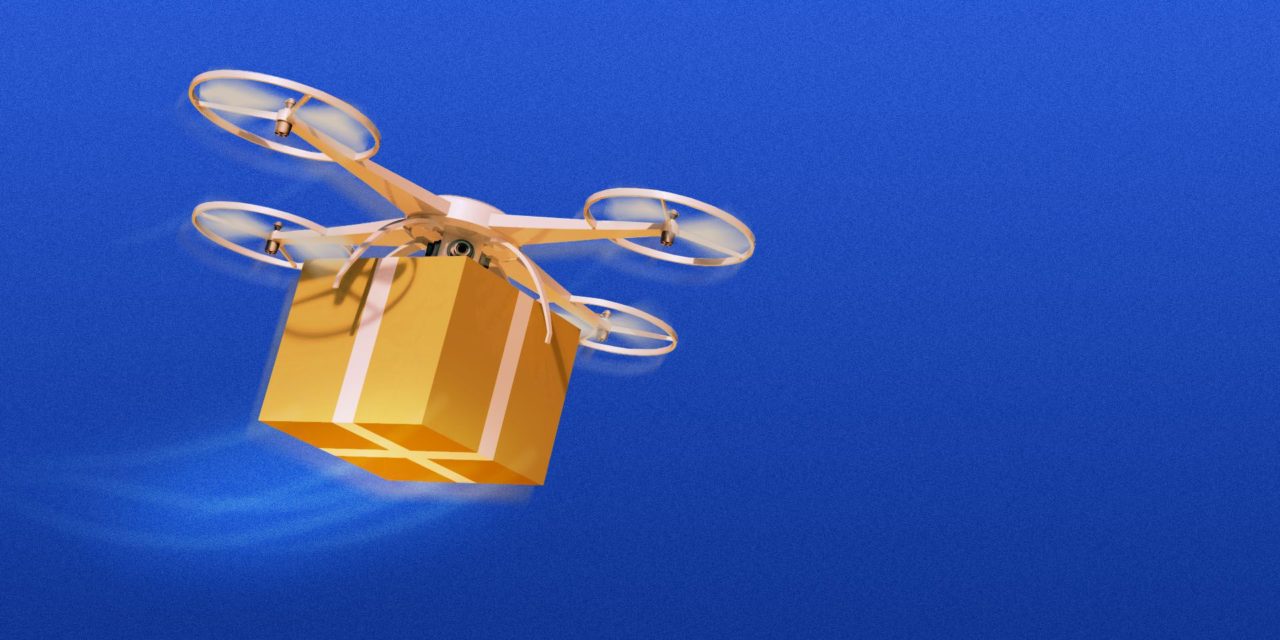Illustration: Sarah Grillo/Axios
Bryan Walsh, author of Future
Source: www.axios.com, May 2020
From medical deliveries to monitoring to remote inspections, the pandemic lockdown has accelerated the use of drones.
Why it matters: At a moment when human beings can be both victims and spreaders of infection, fleets of remote drones can help keep the economy humming. But civil liberty advocates worry that drones could push the limits of real-world surveillance.
What’s new: The drone company Zipline, which has been using its remote-controlled aerial fleet to deliver medicines in Africa for years, made its U.S. debut last week, ferrying COVID-19 supplies to hospitals in North Carolina run by Novant Health.
- The mission was made possible by a waiver from the Federal Aviation Administration (FAA). It is currently the nation’s longest-range drone delivery operation.
The big picture: The Zipline run is just one of a number of new uses for drones that have emerged during the pandemic, as governments and companies seek to use the aerial robots in applications that might otherwise require human beings.
- In France, India and the U.S., drones have been employed to monitor crowds for social distancing, while in China drones have been used to issue orders to citizens seen as disobeying pandemic rules.
- Wing, a drone-delivery company owned by Google parent Alphabet, received the first FAA approval for commercial package delivery in April 2019. Wing drones have been used by Walgreens to deliver medications to people in quarantine.
Between the lines: One less known use of drones during the pandemic has been the remote monitoring of job sites that have otherwise been largely closed to human workers because of the lockdown.
- The leading software platform DroneDeploy is used to fly drones over vast farms and construction sites, livestreaming data and producing real-time maps of areas far too large to easily cover on foot or by vehicle.
- As the U.S. economy has slowly reopened over the past few weeks, DroneDeploy has seen a 90% increase in drone use among surveyors and a 56% increase in the construction industry.
- “COVID-19 is accelerating the introduction of this technology across industries,” says Michael Winn, DroneDeploy’s CEO. “It’s not completely changing things, but it is making the transition happen faster.”
Be smart: At a moment when every consulting company worth its salt is heralding the importance of the digital transformation, drones represent the intersection of the digital world and the real world. As they become more widely adopted, they could transform everything from how we receive physical goods to how we’re policed.
- While ubiquitous drones could help relieve delivery truck congestion in crowded cities, they might also create what robotics professor Illah Nourbakhsh has termed “robot smog” — unprecedented visual and noise pollution.
- The same remote monitoring that would seem benign when used on an empty farm or forest could be seen as sinister if employed by police forces extending passive surveillance of minority communities in cities. Despite complaints by civil rights activists, last year drones were approved for use by the LAPD in certain situations like active shooters and search warrants.
- The Electronic Frontier Foundation warns that if “police now start to use drones to identify people who are violating quarantine and walking around in public after testing positive for COVID-19, police can easily use the same drones to identify participants in protests or strikes once the crisis is over.”
The bottom line: The biggest, and maybe the only, beneficiaries of the pandemic are robots — including the ones that fly.

